The Best Years of Our Lives

Brief Synopsis
Cast & Crew
William Wyler
Myrna Loy
Fredric March
Dana Andrews
Teresa Wright
Virginia Mayo
Film Details
Technical Specs

Synopsis
At the end of World War II, three demobilized servicemen meet on a flight to Boone City, their mid-Western hometown. The men, Air Force Captain Fred Derry, sailor Homer Parrish, and Army Sergeant Al Stephenson, quickly develop a bond, even though they come from different backgrounds. Al is a prominent banker with a wife and two children; Fred is a former soda jerk from the wrong side of the tracks, and Homer, who has lost both hands in the war, comes from a close-knit, middle-class family. As they share a taxi from the airport and happily reminisce about familiar locations, including a tavern run by Homer's uncle, Butch Engle, each expresses trepidation about the future and how they will adapt to civilian life. Homer is welcomed joyfully by his parents and girl friend, Wilma Cameron, but his mother cannot hide her heartbreak over seeing his prosthetic hooks. Al is dropped off next at his swank apartment, where he is lovingly greeted by his wife Milly and two children, Peggy and Rob, who have grown up during their father's absence. Finally, Fred goes to see his good-hearted, alcoholic father Pat and his stepmother Hortense in the shanty in which they live and learns that his wife Marie has moved into her own apartment. At Al's apartment, the realization that things have changed during his absence makes Al feel awkward and he suggests that Milly and Peggy join him for a night out on the town. Homer is equally uncomfortable talking with Wilma's parents and decides to go to Butch's place, where he finds Fred brooding over not locating Marie. They are soon joined by a very intoxicated Al, who arrives with the indulgent Milly and Peggy. While playing the piano, Butch listens sympathetically as Homer talks about his family's self-consciousness, then plays "Among My Souveniers" for Al, who dances lovingly with Milly. When the bar closes, Peggy drives the group to Marie's apartment building, but when Fred passes out on the front steps, they decide to take him home to their place. In the middle of the night, Fred has a nightmare about a friend burning in his crashing plane, and his screams awaken Peggy, who gently comforts the sobbing Fred back to sleep. The next morning, a very apologetic Fred is driven home to Marie by Peggy and confesses that he doesn't know what he will do, but will never go back to soda jerking. Meanwhile, Al awakens with a hangover, throws his army boots out the window and compares himself unfavorably to his pre-war photograph. After showering and shaving, he and Milly nervously embrace for their first time since he went into the Army. Later, Al is irritated that Mr. Milton, his former boss, wants him to return right away to the bank and saddened by the thought of all the men who did not come back. Meanwhile, Fred goes to see his old boss, Mr. Bullard, and discovers that the drugstore is now part of a large chain. Bullard recommends Fred to the new manager, but Fred bristles at the idea of taking a low-paying job which would still involve working at the lunch counter. When Al goes to the bank that afternoon, Milton offers him a large raise and a promotion to head the small loans department, but pressures him to start working as soon as possible. That night, when Marie insists that Fred wear his uniform to impress her friends, he agrees, but begins to worry that their hasty wartime marriage was a mistake. At Homer's house, Wilma tries to make him realize that she still loves him as much as ever, but runs home crying after Homer angrily pushes his hooks through a window after seeing his little sister Luella and her friends staring at him. Some weeks later, Fred's money is gone, and he has been unable to get a job. Marie, who likes to go to clubs every night, argues with Fred over money, prompting him to take the job at the drugstore. One day, Peggy stops by, and he asks her to have lunch with him. During lunch he tells her about his "cockeyed" dreams overseas of having a family and a little home, then later kisses her. That same afternoon, Al takes a chance on granting a loan to fellow veteran Novak, a hard-working sharecropper, whose only collateral is his abilities. Although dismayed, Milton does not override Al's decision, but advises him to be more cautious and not gamble with the depositors' money. That night, as Al and Milly prepare to go out to a banquet in his honor thrown by Milton, Milly says that she has a hunch that Peggy is "crazy" about Fred. Peggy, who has invited Fred and Marie out to dinner, admits that she is in love with Fred, but does not want to be, and thinks that seeing Fred with his wife will have a therapeutic effect on her. At the banquet, an inebriated Al gives a rambling speech, but ends by saying that he loves the bank so much, he plans to gamble with the depositors' money and on the future of the country. Although Milton is somewhat annoyed at Al's remarks, Milly feels very proud. At the end of the evening, Peggy returns home and tells her parents that she is going to break up Fred's loveless marriage. Al and Milly try to convince her that an outsider cannot know the true state of someone else's marriage. The next day, Al meets Fred at Butch's and asks him if he is in love with Peggy. When Fred admits that he is, Al suggests that he reconsider things, prompting Fred to call Peggy and lie that he has merely been flirting with her. Some time later, Homer visits Fred at the drugstore and gets into a conversation at the lunch counter with a man who suggests that the war was unnecessary and that the United States was pushed into it by "the Limies" and "the Reds." Fred asks him to leave and Homer, who is incensed by the man's self-proclaimed "old-fashioned Americanism," goes after him. Fred then slugs the man and is fired. On the way home, Fred asks about Wilma and advises Homer to tell her how much he loves her and marry her right away. Late that night, Wilma comes to see Homer, saying that her parents want her to go away because it is obvious that Homer no longer loves her. He argues that she does not know what it would be like living with him, but because she wants to try, he decides to let her see the worst. In his room, Homer gets out of his robe, is able to drop the harness that holds his prosthetics and put on his pajama top without help, but after that, he is completely vulnerable. Rather than being repulsed, Wilma says that she will never leave him and lovingly tucks him into bed. Some time later, Fred, who has been unable to get another job, argues with Marie, who wants to go out with an old boyfriend. Bitterly telling him that she gave up the best years of her life for him, she demands a divorce. Fred then goes back to his father's house and decides to leave Boone City for good. After saying goodbye to his father and Hortense, and leaving his military decorations with them, Fred goes to the airport and waits for the next flight out. Walking onto a part of the field filled with surplus military planes now destined for scrap, Fred climbs into the tail of one of the planes and begins to think of the horrors he witnessed during the war. When he is startled by Karney, the man who owns the salvage company, Fred asks him if he has any jobs. The gruff Karney, who is also a veteran, explains that he is using the scrap for prefabricated houses and hires Fred on the spot. Some weeks later, at Homer and Wilma's wedding, Fred, who is Homer's best man, is nervous to see Peggy and her parents again. At first, Fred and Peggy merely exchange pleasantries, but when Homer kisses Wilma at the end of the ceremony, Fred goes to Peggy and they kiss, happy to face an uncertain future together.

Director

William Wyler
Cast

Myrna Loy

Fredric March

Dana Andrews

Teresa Wright
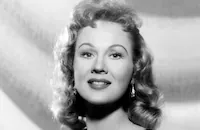
Virginia Mayo

Cathy O'donnell

Hoagy Carmichael
Harold Russell
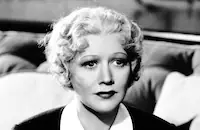
Gladys George

Roman Bohnen
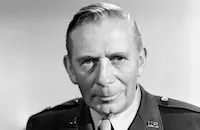
Ray Collins

Minna Gombell
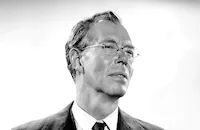
Walter Baldwin

Steve Cochran
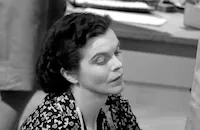
Dorothy Adams
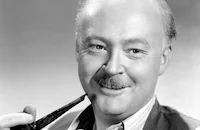
Don Beddoe
Victor Cutler
Marlene Aames

Charles Halton
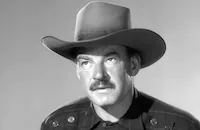
Ray Teal
Howland Chamberlin
Dean White
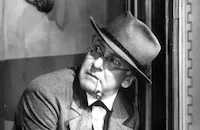
Erskine Sanford
Michael Hall
Clancy Cooper
Hal K. Dawson
Ralph Sanford
Amelita Ward
Alyn Lockwood
Mady Correll
Susan Mann
Robert Karnes
Bert Conway

Blake Edwards
John Tyrrell
Donald Kerr
Billy Engle
Heinie Conklin
Alan Bridge
Jack Rice
Ruth Sanderson
Ben Erway
Edward Earle
John Ince
Mary Arden
Billy Newell
Marek Windheim
Chef Milani
Joseph Palma
Ernesto Morelli
Harry Gillette
Stephen E. Soldi
Roy Darmour
Carol Andrews
Jan Wylie
Norman Phillips
Teddy Infuhr
Claire Dubrey
Peggy Mcintyre
Mickey Roth
Harry Cheshire
Ray Hyke
Leo Penn
Pat Flaherty
Earle Hodgins
Richard Gordon
Harold Miller
Michael Mauree
Doris Jane Fesette
Louise Franklin
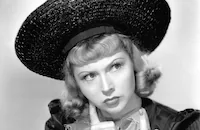
Joyce Compton
James Ames
Tom Dugan
Jackie Jackson
George Nokes
Noreen Sayles
Doreen Mccann
Crew
Jonathan C. Boyle
Marie Clark
Richard Deweese
Perry Ferguson
Hugo Friedhofer
John Fulton
Samuel Goldwyn
Samuel Goldwyn
Julia Heron
George Jenkins
Edgar Leslie
Daniel Mandell
Paul Mantz
Emil Newman
Horatio Nicholls
Sharaff
Robert E. Sherwood
Robert Stephanoff
Gregg Toland

Photo Collections
Videos
Movie Clip






Trailer
Hosted Intro









Film Details
Technical Specs

Award Wins
Best Actor
Best Director
Best Editing
Best Picture
Best Score
Best Screenplay
Best Supporting Actor
Best Writing, Screenplay
Award Nominations
Best Sound
Articles
Trivia - The Best Years of Our Lives - Trivia: THE BEST YEARS OF OUR LIVES
Although they were cast as mother and daughter, Myrna Loy was only 12 years older than Teresa Wright.
While rehearsing the hangover scene, actor Fredric March mixed a bromo with two glasses, then accidentally lifted the empty glass to his lips. He stopped the scene to get it right, but Loy suggested that they leave the mistake in because it seemed "real", so they did.
Future director Blake Edwards had an unbilled bit as a corporal.
Wyler's daughters, seven-year-old Cathy and four-year-old Judy, made their screen debuts in a scene with Dana Andrews in the drug store.
Because of Wyler's use of deep focus photography, The Best Years of Our Lives contains less than 200 separate shots. The average Hollywood film of the period had 300 to 400 shots -- per hour.
Goldwyn was so impressed with the picture that when he saw fellow independent producer David O. Selznick leaving the preview, he asked him, "How much did you love my picture?"
Sam Goldwyn was famous for his mangling of the English language, though his PR department probably wrote some of his most famous gaffes on purpose. In talking to the press about the importance of making significant films like The Best Years of Our Lives, he said "I don't care if it doesn't make a nickel as long as every man, woman and child in America sees it."
To publicize the picture, Goldwyn arranged to appear on Bob Hope's radio show, then asked one of his contract writers for a snappy way to pitch the film. Since Hope had just made a Goldwyn film of his own, The Princess and the Pirate (1944), the writer suggested a simple exchange. Hope would ask, "Well, Mr. Goldwyn, how have things been going since I left your studio?" And Goldwyn would reply, "I'll tell you, Bob -- since you left, we've had the Best Years of Our Lives." Goldwyn liked the exchange and sent it to Hope's writers, who inserted it in the script. When they reached that point in the show, Hope said, "Well, Mr. Goldwyn, how have things been going since I left the studio?" Without looking at his script, Goldwyn replied, "I'll tell you, Bob, since you left, things are better than ever."
President and Mrs. Truman attended the film's Washington, D.C., premiere on March 11, 1947. Also in attendance was Wyler's wartime commander, Major General Carl Spaatz.
When the film was released, cinematographer Gregg Toland took it upon himself to check 41 of the prints distributed. He also visited theatres in Los Angeles to make sure they had the best possible projection equipment. At some of these he ordered new lenses for the projectors and reduced the size of the screens to guarantee the film would be seen under optimal conditions.
Following his performance in The Best Years of Our Lives, Harold Russell returned to college, then headed up AMVETS, a support group for U.S. veterans. In 1992, he made headlines when he defied the Motion Picture Academy® by selling his Best Supporting Actor Oscar® to a private buyer for $60,500 to help pay for an operation his wife needed.
When William Wyler won the Lifetime Achievement Award from the American Film Institute, Myrna Loy was one of the featured speakers. After hearing other actors kid Wyler about his penchant for numerous re-takes, she spoke in his defense, saying that he only did the re-takes because "he suspects some wonderful new thing is going to happen -- and it usually does." The next morning, Wyler called to thank her.
FAMOUS QUOTES FROM THE BEST YEARS OF OUR LIVES (1946)
"I look terrible...It isn't fair of you to bust in on us like this." - Myrna Loy as Milly Stephenson.
"What do you think of the children?"
"Children? I don't recognize 'em. They've grown so old."
"I tried to stop them, to keep them just as they were when you left, but they got away from me." - Myrna Loy, as Milly Stephenson, and Fredric March, as Al Stephenson, catching up.
"Give 'em time, kid. They'll catch on. You know, your folks will get used to you, and you'll get used to them. Then everything will settle down nicely, unless we have another war. Then none of us have to worry because we'll all be blown to bits the first day. So cheer up, huh?" - Hoagy Carmichael as Butch.
"Last year, it was Kill Japs. This year, it's Make Money." - Fredric March as Al Stephenson.
"When we were married, Babe, the Justice of the Peace said something about 'for richer, for poorer, for better, for worse.' Remember? Well, this is the worse." - Dana Andrews as Fred Derry.
"I'm sure you'll all agree with me if I said that now is the time for all of us to stop all this nonsense, face facts, get down to brass tacks, forget about the war and go fishing. But I'm not gonna say it. I'm just going to sum the whole thing up in one word. (Milly coughs loudly to caution him -- worrying that he will tell off the boss.) My wife doesn't think I'd better sum it up in that one word. I want to tell you all that the reason for my success as a Sergeant is due primarily to my previous training in the Cornbelt Loan and Trust Company. The knowledge I acquired in the good ol' bank I applied to my problems in the infantry. For instance, one day in Okinawa, a Major comes up to me and he says, 'Stephenson, you see that hill?' 'Yes sir, I see it.' 'All right,' he said. 'You and your platoon will attack said hill and take it.' So I said to the Major, 'But that operation involves considerable risk. We haven't sufficient collateral.' 'I'm aware of that,' said the Major, 'but the fact remains that there's the hill, and you are the guys that are going to take it.' So I said to him, 'I'm sorry Major, no collateral, no hill.' So we didn't take the hill, and we lost the war.' I think that little story has considerable significance, but I've forgotten what it is. And now in conclusion, I'd like to tell you a humorous anecdote. I know several humorous anecdotes, but I can't think of any way to clean them up, so I'll only say this much. I love the Cornbelt Loan and Trust Company. There are some who say that the old bank is suffering from hardening of the arteries and of the heart. I refuse to listen to such radical talk. I say that our bank is alive, it's generous, it's human, and we're going to have such a line of customers seeking and getting small loans that people will think we're gambling with the depositors' money. And we will be. We will be gambling on the future of this country. I thank you." - Fredric March as Al Stephenson
"I've made up my mind...I'm going to break that marriage up." - Teresa Wright as Peggy Stephenson.
"How many times have I told you I hated you and believed it in my heart? How many times have you said you were sick and tired of me and that we were all washed up? How many times have we had to fall in love all over again?" - Myrna Loy as Milly Stephenson.
"I don't like the idea of you sneaking around corners to see Peggy, taking her love on a bootleg basis. I give you fair warning, I'm going to do everything I can to keep her away from you, to help her forget about you and get married to some decent guy who can make her happy." - Fredric March as Al Stephenson.
"I've given you every chance to make something of yourself. I gave up my own job when you asked me. I gave up the best years of my life, and what have you done? You flopped! Couldn't even hold that job at the drugstore. So I'm going back to work for myself and that means I'm gonna live for myself, too. And in case you don't understand English, I'm gonna get a divorce. What have you got to say to that?" - Virginia Mayo as Marie Derry.
"Headquarters, Eighth Air Force. Award of the Distinguished Flying Cross...Despite intense pain, shock, and loss of blood, with complete disregard of his personal safety, Captain Derry crawled back to his bombsight, guided his formation on a perfect run over the objective and released his bombs with great accuracy. The heroism, devotion to duty, professional skill and coolness under fire displayed by Captain Derry under the most difficult conditions reflect highest credit upon himself and the Armed Forces of the United States of America. By command of Lieutenant General Doolittle." - Roman Bohnen as Pat Derry, reading his son's distinguished service citation.
"This is when I know I'm helpless. My hands are down there on the bed. I can't put them on again without calling to somebody for help. Can't smoke a cigarette or read a book. If that door should blow shut, I can't open it to get out of this room. I'm as dependent as a baby that doesn't know how to get anything except to cry for it." - Harold Russell as Homer Parrish.
by Frank Miller

Trivia - The Best Years of Our Lives - Trivia: THE BEST YEARS OF OUR LIVES
The Best Years Of Our Lives
The Best Years of Our Lives was the first major Hollywood production to deal with the problems faced by veterans returning from World War II. At the time, most producers thought the war-weary public was more interested in escapist entertainment, but Goldwyn proved them wrong by turning this into the top-grossing picture of the decade.
Independent producer Sam Goldwyn got the idea for a film about veterans re-adjusting to home life after World War II when his wife, Francis, pointed out a photo in the August 7, 1944 issue of Time magazine. It depicted a group of homecoming Marines leaning out a railway car on which someone had written "Home Again!" in chalk. The story itself dealt with the mixed emotions the men would face on returning to their families and the jobs they held before the war.
Fredric March had worked with Goldwyn twice before, on The Dark Angel (1935) and the disastrous We Live Again (1934), and wasn't too keen on leaving Broadway to work with the producer again. When he lost the lead in Life With Father to William Powell, however, he decided to give the film a shot. Ironically, neither he nor co-star Dana Andrews had served in the war, and March had been a frequent target of conservative commentators for his liberal politics.
Myrna Loy was already considered the screen's perfect wife because of her Thin Man films at MGM, but had made few films recently because of her work for the war effort. Unsure about her willingness to take a secondary role in which she would have a grown daughter, Goldwyn invited her to his home for dinner, where he charmed her into taking the part. She had no problems with the role's size or the character's age, but was concerned about working with William Wyler. "I hear he's a sadist," she confided in Goldwyn. "That isn't true," he retorted. "He's just a very mean fellow." She signed for the role anyway, and her agent secured her top billing.
In the view of most critics, The Best Years of Our Lives is independent producer Samuel Goldwyn's best film. For all the jokes about Goldwyn's vulgarity and his mangling of the English language, the picture is both tasteful and perceptive, the perfect embodiment of what his PR department would call "The Goldwyn Touch." In truth, that touch was the product of some of the best filmmakers in Hollywood, including director William Wyler and cinematographer Gregg Toland, who worked under contract to Goldwyn. The film was really the last hurrah for The Goldwyn Touch, as it marked Wyler's last film before breaking out with a production company of his own.
At 172 minutes, The Best Years of Our Lives was almost twice the length of the average picture of its era. Goldwyn considered cutting it, but when he screened it with Wyler it was so tight that he couldn't find anything to cut. In addition, the time seemed to fly by. That judgment was reinforced by preview audiences in October 1946, who were so enthusiastic that he decided not to cut the picture.
The film won seven Oscars®: Best Picture, Best Director, Best Actor (Fredric March), Best Supporting Actor (Harold Russell), Best Screenplay, Best Score and Best Editing. The only category in which it lost was Best Sound. In addition, Goldwyn received the Irving Thalberg Award, a special honor for outstanding work in production. Russell's win was a surprise. Earlier in the evening he was handed a Special Oscar® "for bringing hope and courage to his fellow veterans." This would make him the only performer to receive two Oscars® for the same performance.
Director: William Wyler
Producer: Samuel Goldwyn
Screenplay: Robert E. Sherwood
Based on the Verse Novel Glory for Me by MacKinlay Kantor
Cinematography: Gregg Toland
Editing: Daniel Mandell
Art Direction: George Jenkins, Perry Ferguson
Music: Hugo Friedhofer
Cast: Myrna Loy (Milly Stephenson), Fredric March (Al Stephenson), Dana Andrews (Fred Derry), Teresa Wright (Peggy Stephenson), Virginia Mayo (Marie Derry), Cathy O'Donnell (Wilma Cameron), Harold Russell (Homer Parrish), Hoagy Carmichael (Butch Engle), Gladys George (Hortense Derry), Steve Cochran (Cliff Scully), Ray Collins (Mr. Milton), Roman Bohnen (Pat Derry)
BW-170m. Closed captioning.
by Rob Nixon
The Best Years Of Our Lives
Teresa Wright (1918-2005)
She was born Muriel Teresa Wright in New York City on October 27, 1918. She showed a keen interest in acting in grade school, and by the time she was 19, she made her Broadway debut in Thorton Wilder's Our Town (1938); the following year she scored a hit as Mary, the weeping ingénue in Life with Father (1939). The word was out that New York had a superb young acting talent on hand, and Samuel Goldwyn soon brought her to Hollywood for William Wyler's adaptation of Lillian Hellman's The Little Foxes (1941). She scored an Oscar® nomination for her film debut as Regina Giddens' (Bette Davis), honorable daughter, Alexandria.
She maintained her amazing momentum by scoring two Oscar® nominations the following year for her next two films: as Carol Miniver in Wyler's Mrs. Miniver (Best Supporting Actress Category), and as Lou Gehrig's (Gary Cooper) faithful wife Ellie in Pride of the Yankees (Best Actress Category), and won the Oscar for Miniver. Yet for most fans of Wright's work, her finest hour remains her perfectly modulated performance as young Charlie in Alfred Hitchcock's masterpiece, Shadow of a Doubt (1943). Wright's performance as the self-effacing, impressionable young niece who gradually realizes that her beloved uncle (Joseph Cotton) may have murdered several widows is effective since Wright's air of observation, subtly turns from idol gazing, to a watchful air of caution as the facts slowly being to unravel. 60 years on, fans of Hitchcock still acclaim Wright's performance as an integral part of the film's classic status.
She proved her talents in comedy with the delightful Casanova Brown (1944), but then saw her schedule slow down due to domesticity. After she married screenwriter Niven Busch in 1942, she gave birth to son, Niven Jr., in 1944, and took two years off to look after her family. She soon returned to film with another Wyler project, the Oscar®-winning, post war drama, The Best Years of Our Lives (1946), playing Fredric March's level-headed daughter, Peggy, she again took some time off after giving birth to her daughter, Mary in 1947. On her second attempt to return to the big screen, Wright found her popularity on the wane. Her wholesome image was in sharp contrast of the tougher, more modern women in post-war Hollywood, and her stubborn refusal to pose for any swimsuit or cheesecake photos to alter her image led to her release from Sam Goldwyn's contract.
As a freelance actress, Wright still found some good roles, notably as a young widow in the thriller scripted by her husband, in The Capture; and as a faithful fiancée trying to help Marlin Brandon deal with his amputation in Stanley Kramer's The Men (both 1950). Yet within a few years, she was playing middle-aged mothers in film like The Actress (1953), and The Track of the Cat (1954), even though she was still in her early '30s. By the mid-50s she found work in live television, where she could apply her stage training, in a number of acclaimed shows: Playhouse 90, General Electric Theater, Four Star Playhouse, and The United States Steel Hour.
She took a break from acting when she married her second husband, the playwright Robert Anderson in 1959, (she had divorced her first husband, Busch, in 1952) and was out of the public eye for several decades, save for an isolated theater appearance. When she did return, it was intermittent, but she was always worth watching. In James Ivory's Roseland (1977), a portrait of the New York dancehall; she was poignant as a talkative widow obsessed with her late husband; and as an enigmatic old actress in Somewhere in Time, she nearly stole the picture from leads, Christopher Reeve and Jayne Seymour. She was still active in the '90s, appearing a few hit shows: Murder, She Wrote, Picket Fences; and a final film role in John Grisham's The Rainmaker (1997). She is survived by her son, Niven; daughter, Mary; and two grandchildren.
by Michael T. Toole
Teresa Wright (1918-2005)
Virginia Mayo (1920-2005)
She was born Virginia Clara Jones in St. Louis, Missouri on November 30, 1920, and got her show business start at the age of six by enrolling in her aunt's School of Dramatic Expression. While still in her teens, she joined the nightclub circuit, and after paying her dues for a few years traveling across the country, she eventually caught the eye of movie mogul Samuel Goldwyn. He gave her a small role in her first film, starring future husband, Michael O'Shea, in Jack London (1943). She then received minor billing as a "Goldwyn Girl," in the Danny Kaye farce, Up In Arms (1944). Almost immediately, Goldwyn saw her natural movement, comfort and ease in front of the camera, and in just her fourth film, she landed a plumb lead opposite Bob Hope in The Princess and the Pirate (1944). She proved a hit with moviegoers, and her next two films would be with her most frequent leading man, Danny Kaye: Wonder Man (1945), and The Kid from Brooklyn (1946). Both films were big hits, and the chemistry between Mayo and Kaye - the classy, reserved blonde beauty clashing with the hyperactive clown - was surprisingly successful.
Mayo did make a brief break from light comedy, and gave a good performance as Dana Andrews' unfaithful wife, Marie, in the popular post-war drama, The Best Years of Their Lives (1946); but despite the good reviews, she was back with Kaye in The Secret Life of Walter Mitty (1947), and A Song Is Born (1948).
It wasn't until the following year that Mayo got the chance to sink her teeth into a meaty role. That film, White Heat (1949), and her role, as Cody Jarrett's (James Cagney) sluttish, conniving wife, Verna, is memorable for the sheer ruthlessness of her performance. Remember, it was Verna who shot Cody¿s mother in the back, and yet when Cody confronts her after he escapes from prison to exact revenge for her death, Verna effectively places the blame on Big Ed (Steve Cochran):
Verna: I can't tell you Cody!
Cody: Tell me!
Verna: Ed...he shot her in the back!!!
Critics and fans purred over the newfound versatility, yet strangely, she never found a part as juicy as Verna again. Her next film, with Cagney, The West Point Story (1950), was a pleasant enough musical; but her role as Lady Wellesley in Captain Horatio Hornblower R.N. (1951), co-starring Gregory Peck, was merely decorative; that of a burlesque queen attempting to earn a university degree in the gormless comedy, She¿s Working Her Way Through College (1952); and worst of all, the Biblical bomb, The Silver Chalice (1954) which was, incidentally, Paul Newman's film debut, and is a film he still derides as the worst of his career.
Realizing that her future in movies was slowing down, she turned to the supper club circuit in the 60s with her husband, Michael O'Shea, touring the country in such productions as No, No Nanette, Barefoot in the Park, Hello Dolly, and Butterflies Are Free. Like most performers who had outdistanced their glory days with the film industry, Mayo turned to television for the next two decades, appearing in such shows as Night Gallery, Police Story, Murder She Wrote, and Remington Steele. She even earned a recurring role in the short-lived NBC soap opera, Santa Barbara (1984-85), playing an aging hoofer named "Peaches DeLight." Mayo was married to O'Shea from 1947 until his death in 1973. She is survived by their daughter, Mary Johnston; and three grandsons.
by Michael T. Toole
Virginia Mayo (1920-2005)
TCM Remembers - Harold Russell
Oscar-winning actor Harold Russell died January 29th of a heart attack at age 88. As a disabled veteran whose hands had been amputated in The Best Years of Our Lives (1946), Russell won Best Supporting Actor but also an honorary award "for bringing hope and courage to his fellow veterans." This made Russell the only person to receive two Oscars for the same role. Russell was born in Nova Scotia on January 14, 1914 but grew up in Cambridge Massachusetts. He joined the US Army after the attack on Pearl Harbor and while training paratroopers lost both hands in an accidental explosion. He then made a training film where director William Wyler saw Russell. Wyler was so impressed that he changed the character in The Best Years of Our Lives from a man with neurological damage to an amputee so that Russell could play the part. After winning the Oscar, Russell followed Wyler's advice and went to college, eventually running a public relations company and writing his autobiography. He made two more film appearances, Inside Moves (1980) and Dogtown (1997), and appeared in a few TV episodes of China Beach and Trapper John MD. Russell made waves in 1992 when he decided to sell his acting Oscar to help cover expenses of his large family. The Motion Picture Academy offered to buy the statue for $20,000 but it sold to an anonymous bidder for $60,000. About the other statute, Russell said, "I'd never sell the special one. The war was over, and this was the industry's way of saying thank you to the veterans."
HILDGEGARD KNEF, 1925 - 2002
German actress Hildegard Knef, who recently appeared in the TCM documentary Marlene Dietrich: Her Own Song, died February 1 at the age of 76. Knef was a big star in Germany after the war, appearing in several classics, which led producer David Selznick to try to coax her to Hollywood. However, Selznick wanted her to change her name and pretend to be Austrian which Knef refused to do. She stayed in Europe and made headlines in 1951 for appearing nude in Story of a Sinner, to which she reportedly remarked "I can't understand all that tumult, five years after Auschwitz!" Knef appeared in over 50 films but the ones best-known outside Germany are The Snows of Killimajaro (1952), Carol Reed's The Man Between (1953) and the Hammer Studios camp favorite The Lost Continent (1968). From 1954 to 1965 she appeared on Broadway for 675 performances as Ninotchka in Silk Stockings. Later in the 60s became a popular German singer, winning qualified praise from Ella Fitzgerald.
ERNEST PINTOFF, 1931-2002
Animator and director Ernest Pintoff died January 12th at the age of 70. He won an Academy Award in the category of Best Short Subject, Cartoons for The Critic (1963), where a man voiced by Mel Brooks hilariously tries to make sense of abstract art. Pintoff had been nominated in the same category earlier for The Violin (1959). He wrote a popular animation textbook and throughout the 70s was a busy TV director. His rare feature films include the exploitation comedies Dynamite Chicken (1971) and Lunch Wagon (1980).
TCM REMEMBERS EILEEN HECKART, DAVID SWIFT & PAUL LANDRES
Eileen Heckart, who won a Best Supporting Actress Oscar for Butterflies Are Free (1972), died December 31st at the age of 82. Heckart was born in 1919 in Columbus, Ohio and became interested in acting while in college. She moved to NYC in 1942, married her college boyfriend the following year (a marriage that lasted until his death in 1995) and started acting on stage. Soon she was appearing in live dramatic TV such as The Philco Television Playhouse and Studio One. Her first feature film appearance was as a waitress in Bus Stop (1956) but it was her role as a grieving mother in the following year's The Bad Seed that really attracted notice and an Oscar nomination for Best Supporting Actress. Heckart spent more time on Broadway and TV, making only occasional film appearances in Heller in Pink Tights (1960), No Way to Treat a Lady (1968) and Heartbreak Ridge (1986). She won one Emmy and was nominated for five others.
TCM REMEMBERS DAVID SWIFT, 1919-2001
Director David Swift died December 31st at the age of 82. Swift was best-known for the 1967 film version of the Broadway musical, How to Succeed in Business Without Really Trying (he also appears in a cameo), Good Neighbor Sam (1964) starring Jack Lemmon and The Parent Trap (1961), all of which he also co-wrote. Swift was born in Minnesota but moved to California in the early 30s so he could work for Disney as an assistant animator, contributing to a string of classics from Dumbo (1941) to Fantasia (1940) to Snow White (1937). Swift also worked with madcap animator Tex Avery at MGM. He later became a TV and radio comedy writer and by the 1950s was directing episodes of TV series like Wagon Train, The Rifleman, Alfred Hitchcock Presents, Playhouse 90 and others. Swift also created Mr. Peepers (1952), one of TV's first hit series and a multiple Emmy nominee. Swift's first feature film was Pollyanna (1960) for which he recorded a DVD commentary last year. Swift twice received Writers Guild nominations for work on How to Succeed in Business Without Really Trying and The Parent Trap.
TCM REMEMBERS PAUL LANDRES, 1912-2001
Prolific B-movie director Paul Landres died December 26th at the age of 89. Landres was born in New York City in 1912 but his family soon moved to Los Angeles where he grew up. He spent a couple of years attending UCLA before becoming an assistant editor at Universal in the 1931. He became a full editor in 1937, working on such films as Pittsburgh (1942) and I Shot Jesse James (1949). His first directorial effort was 1949's Grand Canyon but he soon became fast and reliable, alternating B-movies with TV episodes.. His best known films are Go, Johnny, Go! (1958) with appearances by Chuck Berry and Jackie Wilson, the moody The Return of Dracula (1958) and the 1957 cult favorite The Vampire. His TV credits run to some 350 episodes for such series as Adam 12, Bonanza, Death Valley Days and numerous others. Landres was co-founder in 1950 of the honorary society American Cinema Editors.
TCM Remembers - Harold Russell
Quotes
"We never had any trouble." How many times did I tell you I hated you and believed it in my heart? How many times did you tell me you were tired of me; that we were all washed up? How many times did we have to fall in love all over again?- Milly Stephenson
I've seen nothing, I should have stayed at home and found out what was really going on.- Al Stephenson
We've got to find a way to live together-or else.- Hortense Derry
You know what it'll be, don't you, Peggy? It may take us years to get anywhere. We'll have no money, no decent place to live. We'll have to work, get kicked around.- Fred Derry
I've made up my mind.- Peggy Stephenson
Good girl.- Al Stephenson
To do what?- Milly Stephenson
I'm going to break that marriage up!- Peggy Stephenson
Say, who is this Peggy Stephenson?- Marie Derry
A girl.- Fred Derry
I didn't think she was a kangaroo!- Marie Derry
Trivia
Ray Teal's character (the Axis sympathizer at the soda fountain) is listed in the credits as "Mr. Mollett". However, the character's name is never mentioned or otherwise alluded to.
Director William Wyler was furious when he learned that Samuel Goldwyn had sent Harold Russell for acting lessons; he preferred Russell's untrained, natural acting.
Wyler wanted a completely un-glamorous look, requiring all costumes to be bought off the rack and worn by the cast before filming, and making sure all sets were built smaller than life-size.
In order to give the film a documentary-style realism, the director drew each member of the crew - props, grips, mixers, etc. - from the ranks of WWII veterans.
This was the first movie in history to feature a disabled actor in a major role. It was also the first to deal directly with intimacy issues between disabled and non-disabled people.
Wyler pattered the fictional Boone City after Cincinnati, Ohio.
Notes
The working titles of the film were Glory for Me and Home Again. In the opening credits, actor Fredric March's name is spelled correctly, but in the end credits, his given name is spelled "Frederic." Hollywood Reporter news items, the film's presskit and other contemporary sources reconstruct the evolution of the film from August 1944: After reading a August 7, 1944 Time magazine article, "The Way Home," on apprehensions and adjustment problems that were facing some soldiers returning from World War II, producer Samuel Goldwyn's wife Frances suggested that the men's story would be a good basis for a film. Taking the title of the proposed film from the hand-written "Home Again" sign in a photograph accompanying the article, Goldwyn decided to go ahead with the project. That same night, Goldwyn contacted MacKinlay Kantor, who had written a number of novels that had been adapted for the screen, to write a treatment. In January 1945, Kantor turned in the first part of the story, which was more than 100 pages of blank verse. Given the go-ahead to continue, Kantor eventually completed his story in more than four hundred pages and submitted it under the title Glory for Me. The novel was published in 1945.
When frequent Goldwyn collaborator William Wyler returned from his own war service, Goldwyn brought him onto the project. According to both contemporary and modern sources, Wyler was somewhat reluctant to film the project, in part because he had just started his own company, Liberty Films, along with fellow veterans and filmmakers Frank Capra, George Stevens and Samuel Briskin. Wyler, who an September 11, 1945 article in Hollywood Reporter quoted as saying that he wanted to resume his career with "socially significant" films instead of "pure escapist" ventures, soon agreed to direct the story, and together with Goldwyn worked with Robert E. Sherwood to adapt Kantor's blank verse novel into a shooting script. Sherwood's adaptation, which had significant differences from Kantor's novel, was entitled The Best Years of Our Lives. According to a June 1947 article in Hollywood Citizen-News, Kantor was very vocal in his irritation over changes from his original novel and the film, particularly over the title change.
One major change from the novel was that the disabled soldier in the book was a spastic, while in the film, he is an amputee who has lost both hands. Wyler had seen a short educational army film, "Diary of a Sergeant," featuring Harold Russell, a soldier who lost both hands in a training mishap in 1944. Russell's ease using the metal prosthetics that replaced his hands, and his naturalness in front of the camera, convinced Wyler and Goldwyn that Russell could play a major role ("Homer Parrish") in their film, which marked his feature film debut.
According to a Hollywood Reporter news item in August 1944, Goldwyn planned to cast Teresa Wright, Dana Andrews, David Niven, Farley Granger, Walter Brennan and Constance Dowling, but only Wright and Andrews were in the released film. A Hollywood Reporter news item on August 27, 1945 includes George Davis in the cast, but his appearance in the released film has not been confirmed. A January 1946 Hollywood Reporter news item noted that June Haver was being borrowed from Twentieth Century-Fox as a "leading lady," but she was not in the film. Drummer Gene Krupa and singer Georgia Kane are seen performing very briefly in the nightclub montage; the shots were outtakes from other films. Cathy O'Donnell, who portrayed "Wilma," made her motion picture debut in the film.
Various news items indicate that some backgrounds and aerial shots were filmed in the Southern part of the United States and that Sacramento, CA was to be used as the fictional town of Boone City. It is unlikely that much, if any, Sacramento footage was used in the film, though. According to the film's presskit, Cincinnati, OH was the prototype (but not location site) for Boone City. Many of the exterior scenes in the film were shot in and around Los Angeles. The apartment building in which "Al Stephenson" and his family live is located on Beverly Blvd. near La Brea Avenue in Los Angeles, not far from the Goldwyn studios. A pre-production news item indicated that songwriter-actor Hoagy Carmichael was to compose two songs for the film. Although Carmichael did appear in the film, the film's principal song, "Among My Souvenirs," which he played on the piano in the film, was a 1927 song bought to lend a nostalgic atmosphere to the picture. According to various news items, scheduling problems arose during production because Virginia Mayo was appearing concurrently in The Best Years of Our Lives and another Goldwyn picture, The Secret Life of Walter Mitty. Although a July 22, 1946 Hollywood Reporter new item announced that shooting might shut down for twenty days to accomodate Mayo's schedule, later news items indicate that no significant shut-downs or delays took place on The Best Years of Our Lives.
Contemporary news items and feature articles stated that to publicize the picture, Goldwyn switched advertising agencies from Donahue & Coe to Foote, Cone & Bleding, who were handling the film's $500,000, six-month ad campaign. Hollywood Reporter news items from August through November 1946 indicate that the film's planned November 21, 1946 premiere at the Astor Theatre in New York became problematic because United Artists was suing the theater owners to have the British-made Caesar and Cleopatra forcibly withdrawn prior to the premiere of The Best Years of Our Lives. The theater's management was threatening to leave the theater "dark," but the suit was settled in mid-November when New York State Supreme Court Justice Levy ruled that Caesar and Cleopatra would stay at the theater until just before the Goldwyn picture's debut. The New York premiere for The Best Years of Our Lives was held as a benefit for the Lighthouse, an organization that aided the blind. Road show engagements began in several cities in Dec, and the film opened at the Fox Beverly Theatre in Los Angeles on Christmas Day, for a limited engagement for 1946 Academy Award consideration.
The film received outstanding reviews in trade and consumer publications, both in the United States and abroad. The Film Daily reviewer wrote that the film "comes close to being the perfect film-as close indeed as you've ever seen"; the Variety reviewer called it "one of the best pictures of our lives"; and Bosley Crowther of New York Times stated, "It is seldom that there comes a motion picture which can be wholly and enthusiastically endorsed not only as superlative entertainment but as food for thought. Yet such a one is The Best Years of Our Lives." The film won many critical awards, including Best Picture of the Year by the New York film critics, Look magazine's Industry Award, New York Times's and Time's Best Picture award. The film won the BAFTRA award for Best Picture of the Year in Britain and won Academy Awards in the following categories: Best Picture; Best Director (William Wyler); Best Actor (Fredric March); Best Supporting Actor (Harold Russell); Film Editing (Daniel Mandell); Music (Hugo Friedhofer for scoring a dramatic or comedy picture); and Best Screenplay (Robert E. Sherwood). In addition, a special Academy Award was given to Russell "for bringing hope and courage to his fellow veterans through his appearance" in the film and Samuel Goldwyn was given the Irving Thalberg Award. The film received one additional nomination, for Sound Recording. March earned his second Best Actor Academy Award for the film; his first was for the 1932 Paramount production Dr. Jekyll and Mr. Hyde (see AFI Catalog of Feature Films, 1931-40; F3.1076).
Articles in Film Daily and Motion Picture Herald just after the Academy Awards ceremony indicated that touting the film's "nine Oscars" early in the film's run, when it had yet to open in many cities in the U.S., would significantly increase the film's box office grosses, which had thus far amounted to $5,000,000. To capitalize on the large number of Academy Awards, Goldwyn produced a new campaign book and presskit for exploitation of the film. The new publicity materials prominently displayed pictures of the awards and called The Best Years of Our lives "The most honored Picture of All Time...the only picture ever to receive nine Oscars and such an avalanche of honors from all over the world." New one-sheet and three-sheet posters with a picture of an Oscar and the tag line "The Academy Award Picture! Winner of 9 Academy Awards" were also distributed, both to theaters already showing the picture and to future venues.
The new ad campaign was one of the first examples of a studio's capitalization on winning Academy Awards to further promote a film still in release. Despite the fact that ads seemed to promote the idea that The Best Years of Our Lives had earned more Oscars than any previous film, in fact, it did not. The "nine" Oscars mentioned in the ads included the special award for Russell and Goldwyn's Thalberg Award. Gone With the Wind was still the film with the most Academy Awards, having earned eight regular awards, plus one scientific and technical award and one special award, thus bringing its overall total to ten, not including David O. Selznick's Thalberg Award that year (see AFI Catalog of Feature Films, 1931-40; F3.1674).
According to a modern source, The Best Years of Our Lives went on to earn over $11,300,000 dollars at the North American box office. A April 19, 1948 Variety news item reported that the film earned $8,000,000 in Britain in its initial release. The picture was re-released in 1953 in "first run" houses, according to Hollywood Reporter and New York Times, to tie-in with the homecoming of soldiers returning from the Korean War. Reviews upon the picture's re-release were excellent, with many critics pointing out that time had not diminished the film's emotional impact.
Shortly after the film's completion, Hollywood Reporter reported that Wyler was being banned from the Goldwyn lot after a heated argument with the producer. Although biographies of both Wyler and Goldwyn indicate that the two continued to have an on-again, off-again social relationship, Wyler never made another picture for Goldwyn, for whom he had directed a number of important films from the mid-1930s through 1941, including Dodsworth, These Three, Wuthering Heights (see AFI Catalog of Feature Films, 1931-40; F3.1090, F3.4556 and F3.5212) and The Little Foxes (see below). In 1958, Wyler sued Goldwyn for $408,356. That amount, Wyler claimed, was owed to him based on his 1939 contract with Goldwyn, which entitled him to twenty percent of the profits from all films he directed for Goldwyn. In a July 1, 1958 Los Angeles Times article, columnist Hedda Hopper quoted Goldwyn as saying, "...if Willy feels that he has been mistreated by being paid such a 'paltry' sum as $1,400,000 for directing that picture, he is certainly entitled to the great American privilege of going to court." A May 4, 1962 Daily Variety article stated that Wyler's suit was set to go to court on September 11, 1962, but the exact disposition of the suit has not been determined.
In July 1992, Harold Russell announced his intention to sell one of his two Oscars, the one for Best Supporting Actor, at auction. Russell, who only appeared in one other picture, Inside Moves (1980) and a few television programs, needed what he termed a "financial cushion" beyond his military and disability pensions. According to a feature article in People magazine, incumbent AMPAS president Karl Malden urged Russell not to sell his award because the Oscars "should not become objects of mere commerce." Despite the protests of AMPAS and considerable publicity, Russell's award was sold on August 6, 1992 for $60,500.

Miscellaneous Notes
Began shooting April 15, 1946.
Selected in 1989 for inclusion in the Library of Congress' National Film Registry.
Released in United States March 1976 (Shown at FILMEX: Los Angeles International Film Exposition (Special Programs - The Americas: A National Portrait) March 18-31, 1976.)
Released in United States Fall November 20, 1946
Released in United States Fall November 20, 1946
Released in United States March 1976
Received 7 Academy Awards.
Released in USA on video.














